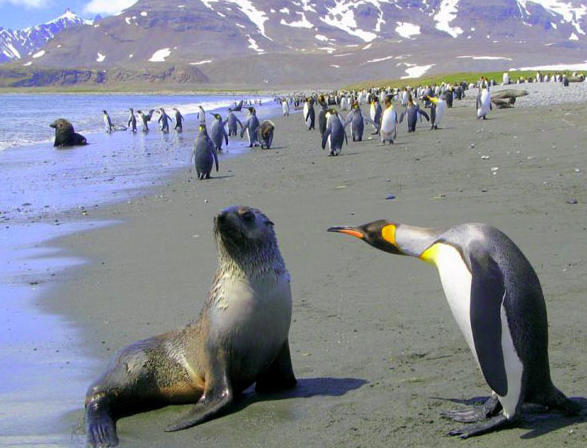(My apologies: I have been busy with work and the post on constipation I had planned for Thursday will appear Monday.)
Here are items that caught my eye this week:
[1] Interesting posts this week: Dr. Steve Parker offers a history of the Mediterranean Diet. Did you know that Ancel Keys invented it? Frank Hagan of Low Carb Age reminds us of the dangers of giving too much protein to children – a topic I expect to blog about again soon. The New York Times explains what video of slipping birds teaches us about running form. Mary Shomon lists the 10 Mistakes of Thyroid Doctors. Kevin Brown of Liberation Wellness argues that doctors may be the leading cause of death. Andrew Badenoch of evolvify assembles evidence that gluten is harmful to non-celiacs. J. Stanton of gnolls.org explains why snacking makes you weak.
[2] Low-Carb for Fatty Liver Disease: An oldie but goodie from Michael Eades: Four patients with extremely high triglycerides due to fatty liver were cured in days on a low-carb diet. Yet another condition that is impossible to cure by drugs, trivial to cure by diet.
[3] Is Fruit Paleo?: Melissa McEwen notes what wasn’t on the Paleolithic menu: fruit.
I might add that it’s not clear that fruit was ever a major part of our ancestors’ diet. The ancestors of chimpanzees and gorillas may have been begun eating fruit after their divergence from the “chuman” human-chimp-gorilla common ancestor. Human ancestors may never have lived in the forests, where fruit is available.
What might Paleolithic Europeans have eaten instead? Melissa casts a vote for raw liver.
[4] What happens if you skip the liver?: On Tuesday morning, Shou-Ching asked me to highlight the story about the French vegans whose breast-fed baby died of pneumonia caused by malnourishment. The baby was severely deficient in vitamins A and B12.
A few hours later Richard Nikoley blogged the story. Vegans, head over there for some sense.
It is possible to be a healthy vegetarian – our book has an appendix explaining how to do it – but it helps immensely to include eggs, dairy, and nutritional supplements. To exclude all animal-related foods, and not to supplement key animal-derived nutrients, is slow suicide – sometimes, as the French story shows, quick infanticide.
[5] 30 Bananas a Day not immediately fatal: Thanks to Richard’s post I looked at a video of a 30 Bananas a Day retreat. I was pleased to see them drinking coconut milk (healthy saturated fats) and, on sandwiches, replacing bread with melon slices. A zero-grain saturated-fat-rich diet – it might be malnourishing, but at least it’s low-toxicity:
You know it can’t be all bad if Stephan has converted!
[6] The French resistance lives: The Guardian:
[I]t is not easy being vegetarian in France, the land of steak-frites, foie gras and other solidly carnivorous fare…. A non-scientific survey of Facebook reveals that the British-based Vegan society has 60,978 fans, while the French Vegetarian Association has 1,518 and the Vegetarian and Vegan page 1,173. (By comparison the French “Slap a Vegetarian with an Escalope” page has 168,294 fans.)
Maybe we should take a trip to Paris, to check out the food. It sounds good!
[7] Insulin Wars!: O Primitivo gives this name to the dust-up that started with CarbSane assailing Gary Taubes and picked up recently at Peter’s blog. He offers an amusing cartoon:
As it happens Shou-Ching and I went to hear Gary Taubes talk on “Why We Get Fat” last Wednesday, and I may review it this week. Those who would like to hear a nearly identical talk can go to Gary’s site and view the “IMS Online Lecture” on YouTube.
[8] Good News From Japan: A dog was rescued:
[9] Bad News From Alabama and Malaysia: From an Alabama teacher:
I am a 6th grade school teacher, and I am appalled at what we are feeding our children every day in the lunchroom. Yesterday our students had pizza, corn, wheat bread, and rice krispie treats. They could also buy slushies full of sugar and food coloring. Also available was tea sweetened with splenda. It is unbelievable that people with degrees in nutrition are planning these meals! It is no wonder that we have such a problem with childhood obesity and that our schools are full of students that have ADHD, behavior problems, and learning problems.
From another reader:
In Malaysia (Sarawak), I was served a local dessert made with Sago and coconut milk and sugar. Wonderful! I asked about the sago and was told it was a starch made from trees! The next day for lunch I had the sago (in hardened form) with some type of local fish marinated in spicy oil. I asked if they eat the sago often and sadly I heard this story: Sago is a local food that they have made and eaten for centuries BUT now everyone in Malaysia realizes that coconut oil and coconut milk have saturated fat so they should not eat it very often and because the sago is primarily associated with these ‘fattening’ and ‘bad for you’ foods, that the sago is going out of style. Truly sad.
Sago is, of course, one of the safe starches recommended in our book; and you know we like coconut oil and coconut milk.
C.H. Spurgeon said that a lie can get around the world before the truth gets its boots on. A lie has conquered Alabama schools and reached Malaysia. Does the truth have its boots on yet?
[10] Candy eating good?: Epidemiology is hard to interpret, but this was interesting. Compared to adults who ate no candy, candy-eaters had lower body weight, 5% slimmer waists, lower blood pressure, and higher HDL – despite eating more total calories and more saturated fat.
I doubt this is supporting evidence for 30 bananas a day. Two more plausible explanations:
- Adults who eat candy pay no attention to the health advice propagated by authorities, and follow their taste buds (which evolved to help them) toward meats and fats and away from grains.
- When adults develop poor health, they start avoiding candy.
Nevertheless, if I do review Gary Taubes this week, this paper might deserve a mention. It counts against both the “carbs make you fat” and the “gluttony makes you fat” theories!
Source: O’Neil CE et al. Candy consumption was not associated with body weight measures, risk factors for cardiovascular disease, or metabolic syndrome in US adults: NHANES 1999-2004. Nutr Res. 2011 Feb;31(2):122-30. http://pmid.us/21419316.
(Via John J. Ray, Food & Health Skeptic.)
[11] Addendum to last week: Speaking of John J. Ray, he has a nice cartoon that I wish I’d used in last Saturday’s #11 on increasing morbidity among the elderly:
[12] Second addendum to last week: I noted last Saturday (#8) a study claiming that “displays of power” led to increased testosterone with positive health effects.
But can displaying a “We Rule” t-shirt transform milquetoast economists into dominant athletes? They actually studied this question at Stanford:
(Via John B Taylor)
[13] Aerobic Exercise Not as Healthy as Candy: Fight Aging! notes that while lower metabolic rates extend lifespan, aerobic exercise doesn’t lower metabolic rate (despite lowering pulse rates). Moreover, higher 24-hour energy expenditure shortens lifespan – so “chronic cardio” may shorten lifespan! It may not be a coincidence that centenarians rarely exercise intensely. They are active but rarely fitness freaks.
One topic I’ve gotten a bit interested in is the effect of obesity on lifespan, which is not large. If obesity induces a lifelong reduction in metabolic rate, it may tend to extend lifespan even as it impairs health. Perhaps this has something to do with the fact that obesity rates are rising and lifespan is lengthening even as morbidity is increasing.
[14] Evil Plot Uncovered: For weeks Richard Nikoley has been claiming to have evil plots underway. I love an evil plot, so I investigated. I haven’t felt as cheated since I flew business class to Tokyo booked as a vegan, and had to eat seaweed while everyone else got filet mignon.
Turns out his evil plots were to inspire vigorous discussion in his comment section and improve the health of young children.
At first I thought I had been duped: Clark Kent was pretending to be Lex Luthor, and I got suckered. But then I realized it was rather like the Cretan Paradox. If only the evil lie, and he had lied, then he must be evil. And evildoers plot. So he really must have an evil plot – even though he said he did, which would make him honest – unless he had lied about the nature of his plot. But what could his real evil plot be?
It so happened I recently installed a Firefox add-on that displays site meta tags. What do you think is high on Richard’s list? Not the first tag – his reachout to the porn community (“food porn”). This: “vegan / vegetarian.”
This can only mean one thing. Richard Nikoley is attempting a hostile takeover of the vegan community. He’s trying to replace T. Colin Campbell as their leader. His upcoming book? The New Evolutionary Vegan Diet Solution. Its premise: vegans are so brain-addled from lack of B12, they won’t notice their new diet is 90% beef.
Yes, I know he won’t admit it. No evil plotter ever admits his plans. Just remember – when it happens, you heard it here first.
[15] Hot pinup girl!: Yes, inspired by Richard’s “porn” tag I’m trolling for Google hits:
(via Rantburg)
[16] Video of the week: Hike the Appalachian Trail in 4 minutes:
Green Tunnel from Kevin Gallagher on Vimeo.
(Via Craig Newmark.)
























Recent Comments